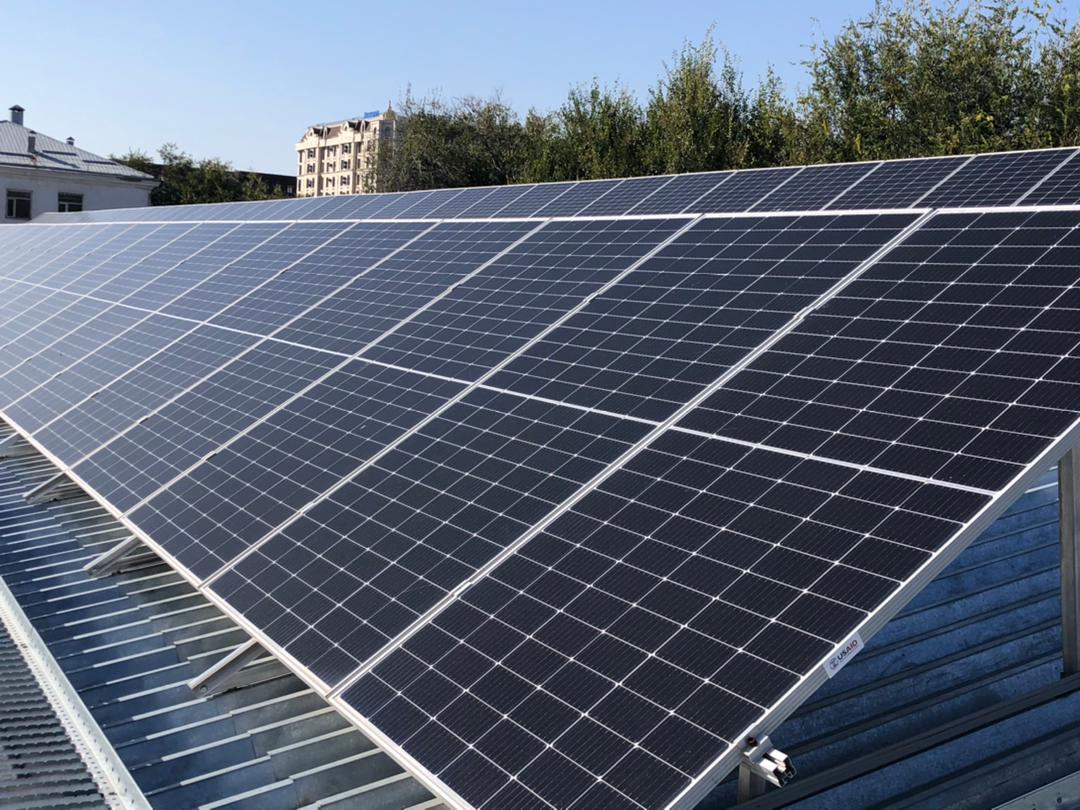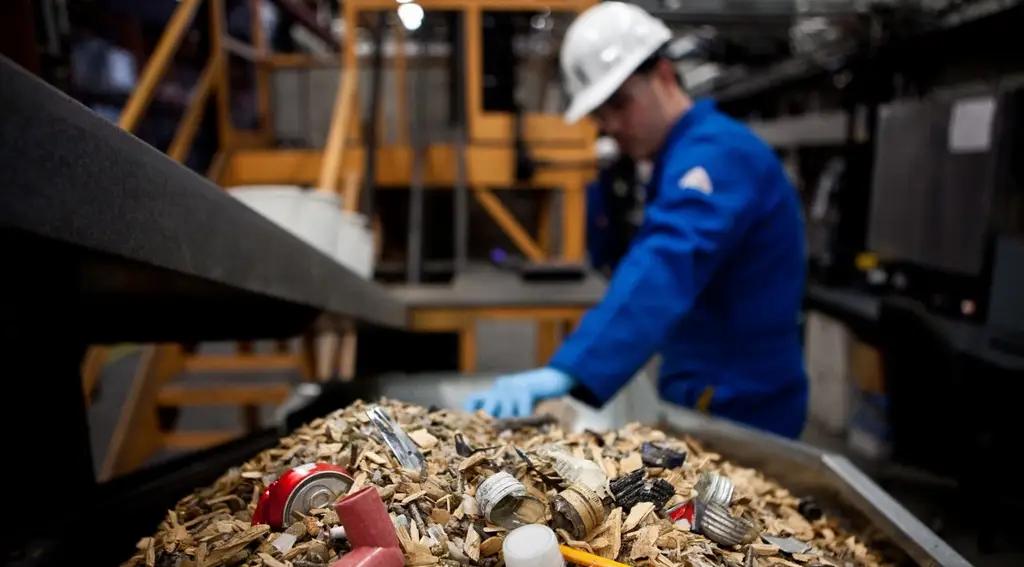Published
10/15/2024, 15:27At the end of last year, the Kyrgyz State Technical University (KSTU) officially opened our country's first grid-connected rooftop solar photovoltaic power plant. The solar photovoltaic power plant has several purposes - it generates electricity and serves as an educational resource for students of KSTU and other institutions.
TO ASSIST PROFESSORS AND STUDENTS
The solar roof is now supplying the University's electricity needs. This Kyrgyz-American partnership became possible thanks to USAID's Central Asia Energy Project. The 80-kilowatt solar power plant installation finished last September. It produced 143,37 kilowatt-hours of electricity over the year. And importantly, the clean energy source also enables carbon dioxide emissions reduction.
The other day, journalists from the capital were demonstrated the solar roof, given a tour and told about how RES helps students in their studies and provides the university with electricity.
"During the solar photovoltaic power plant project, our university simplified the training modules that are part of the energy specialist training, our lecturers received advanced training and implemented the updated modules in their teaching processes. Our research team has also been studying the potential zoning issues for Kyrgyzstan with its highest potential for solar wind energy. This information has been passed on to the Ministry of Energy, and the Ministry is already officially working with investors to attract them to invest in energy infrastructure,' the Principal of the Iskhak Razzakov State Technical University, Mirlan Chynybaev, says.
This year the University decided to support the training of specialists in renewable energy, and 50 budget places were allocated for the first year of study. The current students consciously chose this direction, and the Administration believes that the faculty will become more and more popular because the need for qualified personnel will grow.
"This solar power plant generates electricity to supply the University - if a little more electricity is generated, the University has the option of selling it back to the grid and thus generating income. Such solar photovoltaic power plants' role in covering the growing need for electricity in the KR will be increasing. With this solar PV plant, Kyrgyzstan's next generation of energy professionals are being trained to work in the renewable energy sector. I am excited to meet with the students at KSTU and the faculty because future work will be critical to moving the country toward a clean energy future,' Anjali Kaur, Deputy Assistant Administrator of USAID's Bureau of Asian Affairs, says.

She also announced the launch of USAID's new flagship project ‘Green Solutions’. This five-year, $24 million programme aims to empower SMEs to implement innovative green solutions, improve energy efficiency and increase the renewable energy supply.
"This project will work in three main areas. The first is that we will work closely with the government of the Kyrgyz Republic to develop policies to help stimulate a green economy. Two - we will work with businesses, to support local SMEs with grants so they can introduce new innovative solutions, including green solutions. And third - we will work with banks and financial institutions to develop green finance. We are happy and ready to support and work closely with the Kyrgyz government to ensure that every Kyrgyzstani has a chance for a beautiful green future,’ she said.
AT A ‘GREEN’ TARIFF
Almaz Tolomushov, a senior professor at the Faculty of Energy, explained how the station is operating now. The roof had to be reconstructed especially for its installation. After selecting a suitable site for the solar panels, accounting for static, dynamic and wind loads, a decision was made to reconstruct the roof completely. Thus, the gable symmetrical slate roof and wooden supporting structure were dismantled on the building, and instead, an asymmetrical metal roof with a metal structure was mounted. This allowed us to place solar panels at an angle of 35 degrees to the horizon, which excludes their possible obscuration.
By the way, the installation was carried out following all international standards using high-quality equipment and consumables. For the installation, solar panels made in Turkey with a unit capacity of 545 W were used, as well as inverters manufactured in Austria with a unit capacity of 27 kW.
The University's solar roof consists of 150 solar panels, arranged on the roof in three rows, which generate DC electricity. Inverters then convert it into AC electricity and synchronously output it to the central power grid. The station directly converts solar energy into electrical energy and is integrated into the capital's power grid as well. Now the solar panels fully meet the University's need for electricity, and when a little more is produced, it can be sold to the grid and thus generate income. By the way, electricity is sold at a ‘green’ tariff.
HIGHER EDUCATION INSTITUTIONS' CONTRIBUTION TO COMBATING CLIMATE CHANGE
This practice of installing solar panels exists in many educational institutions in different countries. For example, the largest facade solar power plant in the Urals was installed on the wall of the UralENIN building of UrFU. More than 100 solar panels cover an area of 300 square metres and help to illuminate the 12-storey building of the educational institution. The solar power plant helps the university to reduce its electricity costs. But the main task of the solar panels there is also educational and scientific, as the funds for the purchase of the panels were allocated by the Russian Ministry of Education and Science in the form of a grant for the youth laboratory ‘Centre for Environmentally Tolerant Energy based on Nuclear, Renewable and Non-Traditional Energy Sources’ at UrFU.
Uzbekistan adopted a transition to a green economy programme and green growth until 2030 at the end of the year before last. Earlier, the government announced plans to eliminate the coal, natural gas and oil products as fuels use by 2050 to achieve hydrocarbon neutrality, or ‘zero emissions’. According to this ambitious programme, by 2030, the share of renewable energy used will account for about 30% of the country's total electricity generation. There, for example, 287 solar panels have already been installed on the roof of one of the buildings of the Tashkent State University of Economics.



